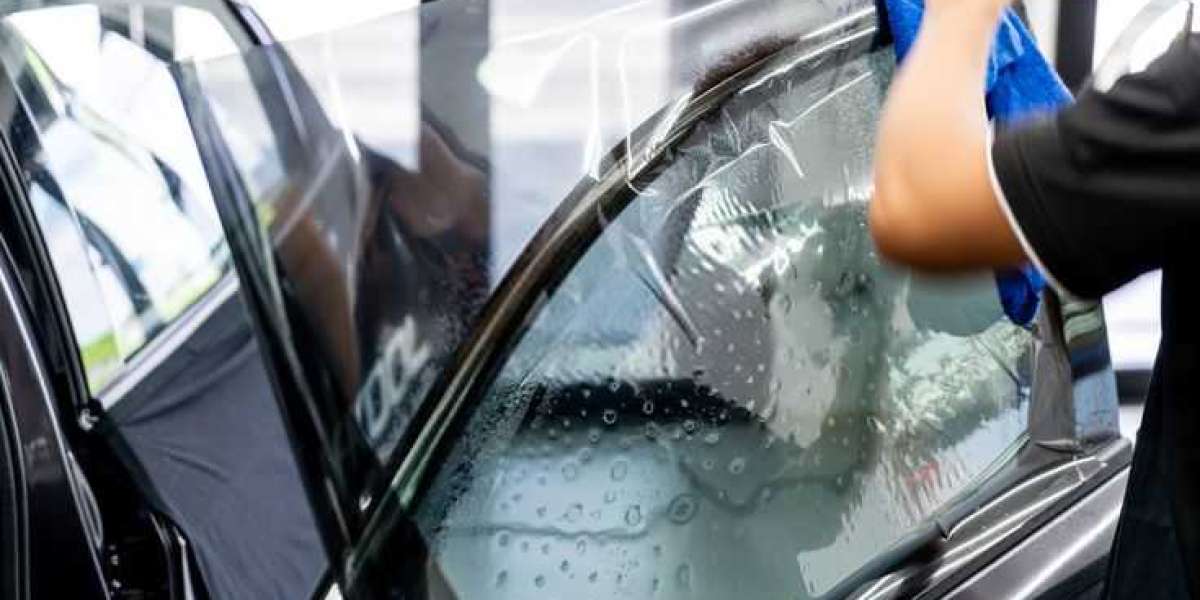Car window tinting has become an essential aspect of vehicle customization and maintenance. What once started as a luxury option for high-end vehicles is now a common modification for drivers who prioritize aesthetics, comfort, and safety. Window tinting not only enhances a car's appearance but also offers significant functional benefits such as protection from harmful UV rays, heat reduction, and increased privacy.
In this guide, we will explore everything you need to know about car window tinting, from its benefits to legal regulations, different types of tint films, and tips for choosing the best tint for your vehicle.
What is Car Window Tinting?
Car window tinting involves applying a thin film or layer of material to the interior side of a vehicle's windows. These films come in various materials and shades, each offering different levels of light transmission and heat rejection. The most common materials used for window tinting are dyed polyester, metalized film, ceramic, and carbon.
This film blocks or reflects a certain percentage of sunlight, providing a range of benefits, including heat reduction, UV protection, privacy, and glare reduction. Tinting can be applied to all vehicle windows except the windshield (in most areas, only a light shade is allowed for windshields for visibility purposes).
Benefits of Car Window Tinting
UV Protection
Car window tinting helps block up to 99% of harmful ultraviolet (UV) rays from the sun. Overexposure to UV rays can cause skin damage and increase the risk of skin cancer. Additionally, UV rays can deteriorate the vehicle’s interior, fading upholstery and causing materials like leather and vinyl to crack or fade over time. Tinting protects both the driver and passengers from prolonged exposure to these harmful rays.
Heat Reduction
Tinted windows help regulate the temperature inside the vehicle by reflecting heat away from the interior. During hot summer months, the car stays cooler, reducing the need for excessive air conditioning. This not only enhances comfort but can also improve fuel efficiency as the air conditioner doesn't have to work as hard to cool the interior.
Enhanced Privacy
One of the most noticeable benefits of Residential window tinting is the added privacy it provides. Passersby and potential thieves can’t easily see inside the vehicle, protecting your belongings and your personal space. Tinted windows make it harder for people to peek into the car, which is especially useful in high-traffic or urban areas.
Glare Reduction
Glare from the sun or headlights can impair visibility and increase the risk of accidents. Tinted windows reduce glare, making it easier to see the road in bright sunlight or during nighttime driving. By minimizing glare, drivers can focus better on the road and feel less fatigued, especially on long trips.
Safety and Shatter Resistance
Tinted windows can increase safety by holding shattered glass together in the event of an accident or impact. The adhesive layer of the tint film acts as a protective barrier, preventing glass from shattering into sharp pieces that could cause injury. This feature is particularly valuable for those who frequently drive on highways or in areas prone to accidents.
Types of Window Tint Films
When considering window tinting for your vehicle, it’s essential to know that not all films are the same. Different films offer different levels of performance, durability, and cost.
Dyed Window Film
Dyed film is the most affordable type of window tint and is known for its appearance and ability to block light. It’s made by applying a layer of dye between layers of adhesive and polyester film. While dyed tints provide excellent privacy and moderate heat rejection, they tend to fade over time and offer minimal UV protection compared to higher-quality films.
Metalized Window Film
Metalized window film contains tiny metallic particles that reflect heat and block UV rays. This type of tint is more durable than dyed film and provides excellent heat and UV protection. However, the metallic content can interfere with cell phone signals, GPS, and radio reception. It also has a reflective appearance that some people may not prefer.
Carbon Window Film
Carbon window tint is a premium option that does not contain metal, making it an excellent choice for avoiding signal interference. It has a sleek, matte finish that enhances the vehicle's appearance and provides superior heat and UV protection. Carbon films are durable, won’t fade over time, and offer effective insulation, making them a popular choice for many drivers.
Ceramic Window Film
Ceramic film is the most advanced and expensive option. It uses nano-ceramic particles to reject heat and block UV rays without interfering with electronic signals. Ceramic tints are highly durable, resistant to fading, and offer the best heat and glare reduction. They also provide exceptional clarity, allowing for enhanced visibility even with darker shades.
Legal Regulations for Car Window Tinting
Window tint laws vary by country and state, so it’s important to familiarize yourself with local regulations before getting your windows tinted. These laws govern how dark the tint can be (often measured as a percentage of visible light transmission or VLT) and which windows can be tinted.
In most places, front-side windows must allow a certain percentage of light to pass through (usually between 30% and 50%), while rear windows can have a darker tint. The windshield typically can only be tinted at the top or to a very light degree for visibility reasons. Violating these laws can result in fines, failed vehicle inspections, or being asked to remove the tint.
Before getting your windows tinted, check with local authorities or consult a professional tinting service to ensure compliance with your area's regulations.
Choosing the Right Window Tint
Consider Your Budget
The cost of car window tinting can vary widely depending on the type of film, the size of your vehicle, and the complexity of the installation. Budget options like dyed film are cheaper but may not last as long or offer the same benefits as ceramic or carbon tints. Higher-end tints like ceramic are more durable and offer superior performance, making them a better long-term investment.
Evaluate Your Needs
Think about what you value most in window tinting. If you live in a hot climate, you might prioritize heat rejection and opt for ceramic or metalized tints. If privacy is your primary concern, a darker, dyed tint could be sufficient. Drivers who rely on GPS and phone signals should avoid metallic films that might interfere with signal reception.
Professional Installation vs. DIY Kits
While there are DIY window tinting kits available, professional installation is recommended for the best results. Professionals have the experience and tools needed to ensure the tint is applied smoothly and evenly without bubbles or imperfections. A poor DIY job can leave your windows looking messy and may require redoing, costing more in the long run.
Maintaining Your Window Tint
To prolong the life of your window tint, avoid rolling down the windows for at least 3-5 days after installation to allow the film to adhere properly. Use a soft cloth and mild, ammonia-free cleaners to clean tinted windows to avoid scratching or damaging the film. High-quality window tints can last up to 10 years with proper care.
Conclusion
Car window tinting is a valuable upgrade that offers a wide range of benefits, including UV protection, heat reduction, increased privacy, and enhanced safety. With various types of tint films available, it’s essential to choose one that fits your budget, lifestyle, and local regulations. Whether you’re seeking to improve your vehicle's appearance or enhance your driving comfort, window tinting is an investment that can pay off in the long run.








